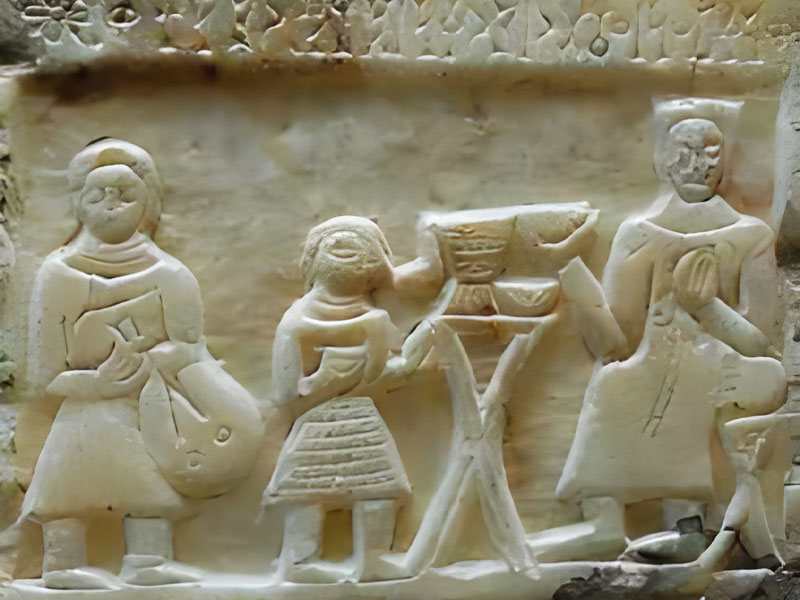Sanaani (Yemeni) Lute
Issue 42

By Mohammed Ali Thamir, an author and researcher from Yemen
The four-stringed Sanaani lute was used in Yemen until after the second half of the 14th century AH (20 AD). With a pickguard lined with thin leather, this lute is still the most commonly used instrument in Yemen. It has retained its historical importance although it did not retain its old name, ‘Mizhar’. Recently, it has been replaced by the modern five-stringed lute, which has a wooden surface.
Today, Yemeni lutes (Al Turabi and Al Qanboos) are dying out. Singers, artists and musicians have abandoned them in favour of the Arab lute; now we only see Yemeni lutes in national museums or in the homes of people who consider them antiques. It is important to protect a nation’s musical instruments, so we must work to save this lute from extinction and to ensure that it remains one of the stringed instruments used in Yemen and the Arab world. We should advise the relevant authorities to encourage the playing of these instruments, to teach students at music schools and art institutes to play these lutes, and to hold special workshops for talented people. We must also train people to build the old lutes retaining their specifications and advantages, and ensure that these instruments survive as a symbol of the authenticity of our heritage and the superiority of our Yemeni music.
On November 7th 2003, the United Nations Organization for Education, Science and Culture (UNESCO) announced that Sanaani singing was part of Yemen’s oral heritage. Sanaani singing is accompanied by instruments, the most important of which is the Sanaani lute known as Al Turabi; the singing and this lute are closely connected. Al Turabi adds aesthetic value and makes the singing distinctive.
However, in Yemen, the craft of building lutes such as Al Turabi and Al Qanboos is dying out for several reasons. Readymade lutes from Syria, Egypt and Lebanon are replacing this instrument; also, the state neglects this important historical craft and does not encourage craftsmen to produce it. We call on the relevant heritage organisations in our country to coordinate with UNESCO to document this heritage. They should also train the younger generations to work in the Sanaani lute industry, to build high quality instruments, and to market the Sanaani lute at international exhibitions, conferences and festivals.
We hope that there will be a response to this message, and that hope will be restored to all who love this lute.







































































